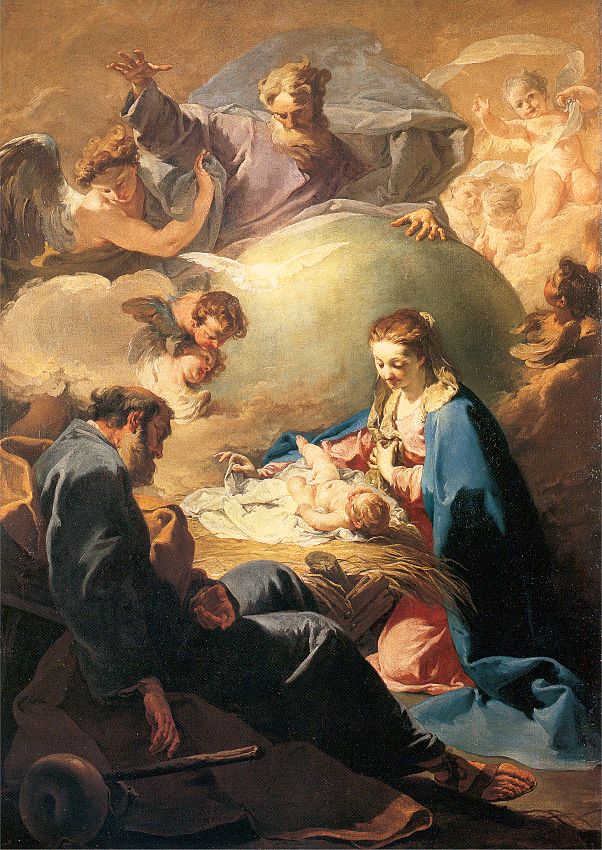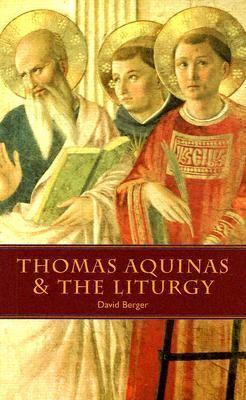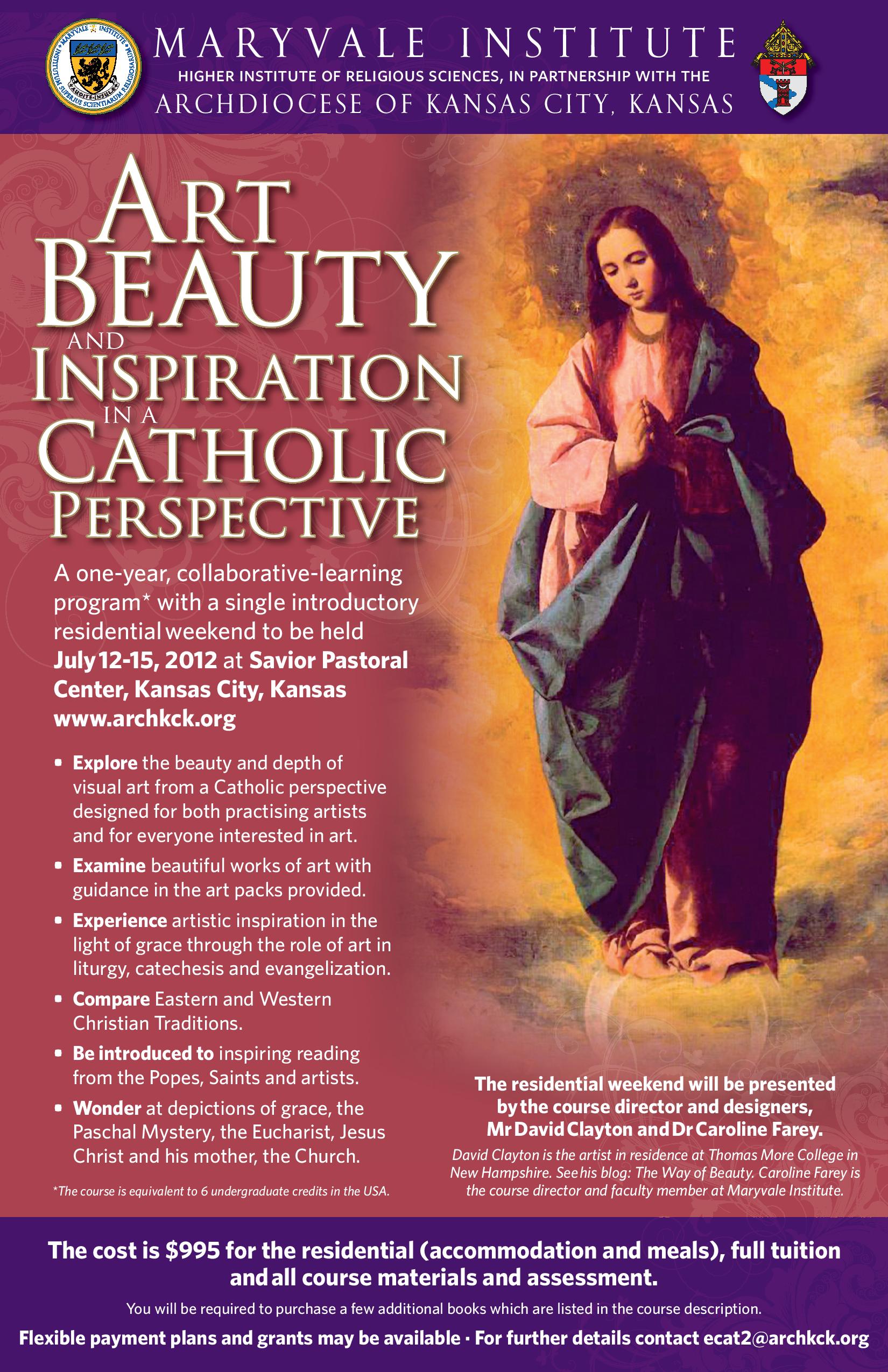The cursing psalms are there for a reason. Omitting them from the Psalter, as the modern Roman Psalter does is detrimental to the psychology and spiritual well-being of the people in the Church.
How Liturgy, Prayer and Intuition Are Connected - Recognition of Pattern and Order
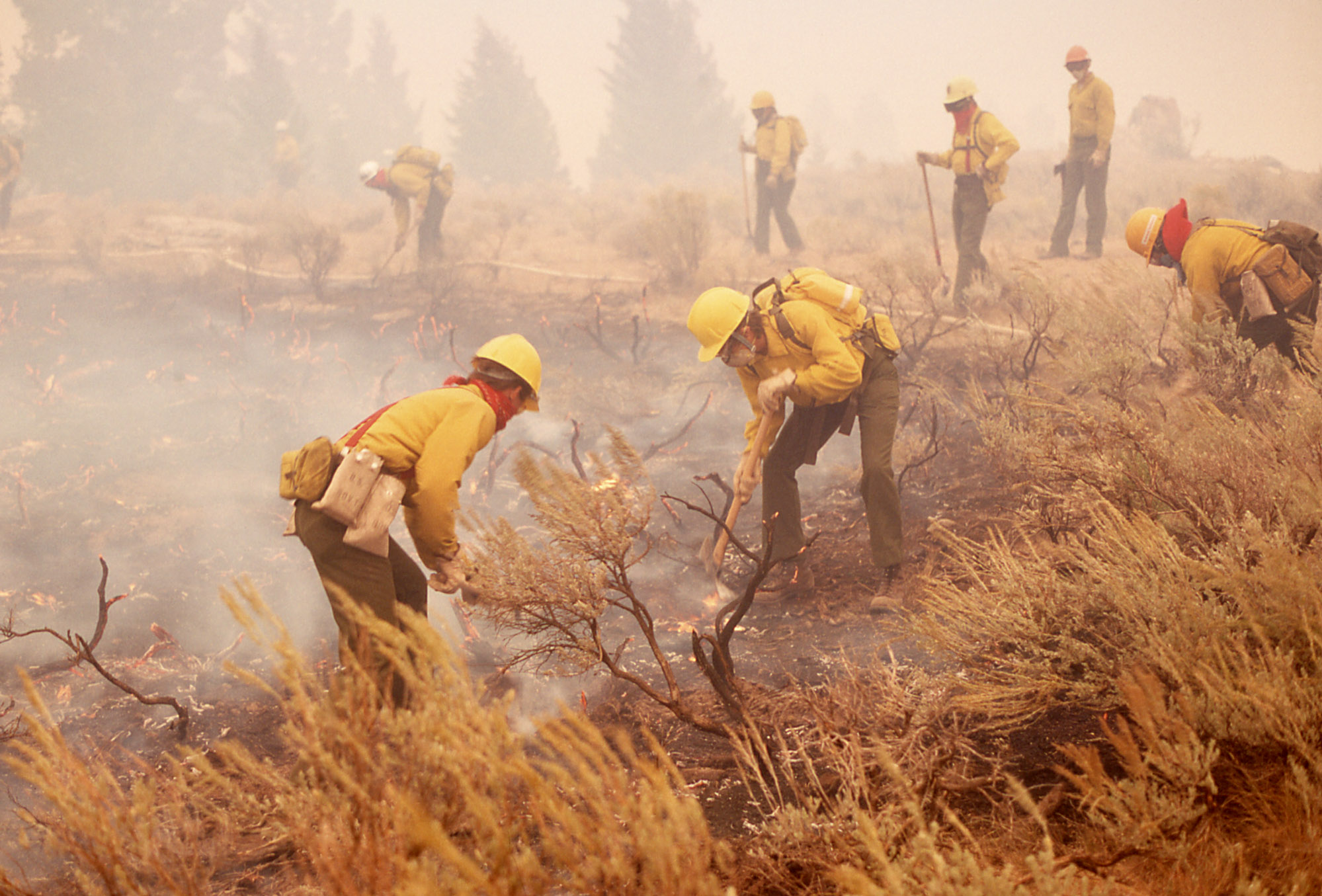 Modern research into how firefighters and nurses respond to a crisis supports the idea that a traditional education in beauty will develop our powers of intuitive decision making.
In a great series of recorded lectures entitled The Art of Critical Decision Making, former Harvard business school professor and current Trustee Professor of Management at Bryant University, Michael A Roberto discusses the importance of intuition in making decisions; and the factors that influence the reliability of our intuitive faculty. He illustrates his points with some striking real-life stories of people relying upon or ignoring intuition (sometimes with dire consequences); and backs up what he says with modern psychological research.
Modern research into how firefighters and nurses respond to a crisis supports the idea that a traditional education in beauty will develop our powers of intuitive decision making.
In a great series of recorded lectures entitled The Art of Critical Decision Making, former Harvard business school professor and current Trustee Professor of Management at Bryant University, Michael A Roberto discusses the importance of intuition in making decisions; and the factors that influence the reliability of our intuitive faculty. He illustrates his points with some striking real-life stories of people relying upon or ignoring intuition (sometimes with dire consequences); and backs up what he says with modern psychological research.
For example, he tells of a number of occasions when nurses in cardiac intensive care units predict that a patient is going to have a heart attack. This is despite the fact that the specialist doctors could see no problem and the standard ways of monitoring the patients' condition indicated nothing wrong either. When such nurses are asked why they think the situation is bad, they cannot answer. As a result their predictions were disregarded. As it turned out, very often and sadly for the people involved, the nurses were right. In order to protect patients in future people started to ask questions and do research on why the nurses could tell there was a problem. What was it they were reacting to, even if they couldn't say initially?
The most dramatic tale he related was of a crack team of firefighters who were specialists in dealing with forest and brush fires and would be helicoptered into any location within a large part of the West to deal with fires when they broke out. The leader of the group was respected firefighter who was a taciturn individual who lead by example. He was not a good natural communicator, but usually this did not matter. One day they responded to a call and went to a remote site in California. When they assessed the situation they discerned the pace of spread of the fire, the direction it was going and so worked out how to deal with it safely. These judgments were important because if they got it wrong the brush fire could move faster than any man could run and they would be in trouble. Initially things went as expected but then suddenly the leader stopped and told everybody to do as he was doing. He threw a match to the ground and burnt an area in the grass of several square yards and then put it out. He then lay down on the burnt patch and waited. When asked why, except to say that he thought they were in danger he was unable to answer - he couldn't articulate clearly the nature of the danger or why this would action help. As a result even though he was respected, his advice was ignored by the team. Suddenly the fire turned and ran straight at them, in the panic the reaction of even these firefighters, was to run. This was the wrong thing to do, as the fire caught them and tragically they died. The only survivor was the leader. He was lying in the already burnt patch that was surrounded by brush fire as it swept through the area, but was itself untouched by the advancing blaze as there was no grass to burn within it. He just waited until the surrounding area burnt itself out and then walked away.
In both cases, the practitioners were experienced people who got it right, but weren't believed by others because people were not inclined to listen to the intuition of others if it couldn't be supported by what they thought was a reasonable explanation.
Dr Roberto describes how research since suggests that it is the level of experience in situ that develops an intuitive sense that is accurate enough to be relied upon. What experience teaches is the ability to spot patterns of events. Through repeated observation they know that when certain events happen, they are usually related to others and in a particular way. Even in quite simple situations the different possible permutations of events would be quite complex to describe numerically and so scientific theorems may have difficulty predicting outcomes based upon them. However, the human mind is good at grasping the underlying pattern of any given situation at an intuitive level, and then can compare with what usually happens by consulting the storehouse of the memory of past events. In these situations described, of the fire and the cardiac unit, all the indicators usually referred to by the text books were within the range of what was considered safe. However, what the experienced nurse and firefighter spotted was a particular unusual combination that pointed to danger. This apprehension of truth was happening at some pre-conscious level and is not deduced step by step, hence their difficulties in articulating the detail of why they felt as they did.
While this ended in disaster at first, lessons were learnt. As a result of this, it was recognized that a good decision making processes ought to take into account at least, the intuition of experienced people. Prof Roberto described how hospitals and firefighters and others learning from them, have incorporated it into their critical decision making processes. This should be done with discernment - intuition is not infallible and the less experienced we are in a particular environment, the less reliable it is so this must be taken into account as well.
It also depends on the person. Some people develop that sense of intuition in particular situations faster than others because the intuitive faculty is more highly developed. This, in my opinion, is where the traditional education in beauty might help. In order to develop our sense of the beautiful, this education teaches us to recognize intuitively the natural patterns and interrelationships that exist in the cosmos. When we do so, we are more highly tuned to its beauty and if we were artists we could incorporate that into our work. For non-artistic pursuits we can still apply this principle of how things ought to be to make our activity beautiful and graceful. Also, we have a greater sense of the cause of lack of beauty, when something is missing and the pattern is incomplete or distorted. In these situations we can see how to rectify the situation. This is the part that would help the firefighter or nurse, I believe. The education I am describing will not replace the specialist experience that gave those nurses the edge, but by deeply impressing upon our souls the overall architecture of the natural order, it will develop the faculty to learn to spot the patterns in particular situations and allow them to develop their on-the-job intuition faster.
The greatest educator in beauty is the worship of God in the liturgy and especially when the liturgy of the hours harmonized with our worship of the Mass with the Eucharist at the center. When we pray well it should engage the whole person, body and soul, in such a way that we conform totally to that cosmic pattern. In our book, The Little Oratory, A Beginner's Guide to Prayer in the Home, I describe both the nature of that pattern and also how in the home we can even reinforce certain aspects of it in the formation of children. In God's plan that intuitive sense is developed to help us in ordering all our daily activities to his plan (which would include potentially firefighting and nursing and indeed most human activity). This development of intuition not only improves decisions made in a crisis, but also makes us more creative. I discuss the connection between intuition and creativity in a past article about creativity in science. Through this at work, in the home or in our worship, we can contribute to a more beautiful culture of living for everyone. This is the hoped for New Evangelization and John Paul II's 'new epiphany of beauty' that draws people to the Faith.
How to Address the Crisis in Fatherhood Head On through Prayer
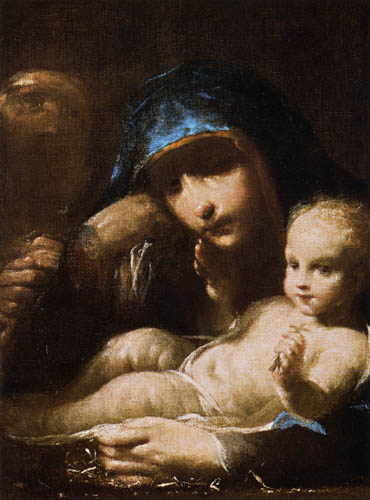 In this article I describe how it is prayer, above all, that binds families together; and the most powerful form of prayer we can pray in the home is the liturgy of the hours. Furthermore, with the father leading the prayers, we are opening the way for a powerful driving force that has effect not only within the family but also beyond the four walls of our home.
I first posted this exactly three years ago. It was in part a desire to see this home-based driving force for change that lead to the writing of the book on prayer in the home, The Little Oratory.
In this article I describe how it is prayer, above all, that binds families together; and the most powerful form of prayer we can pray in the home is the liturgy of the hours. Furthermore, with the father leading the prayers, we are opening the way for a powerful driving force that has effect not only within the family but also beyond the four walls of our home.
I first posted this exactly three years ago. It was in part a desire to see this home-based driving force for change that lead to the writing of the book on prayer in the home, The Little Oratory.
The word Oratory, incidentally means in English 'House of Prayer'. When I used to go to the London Oratory - the wonderful Catholic church in England whose liturgy was so influential in my conversion - I used to see these words on the walls around the sanctuary: domus mea domus orationis vocabitur. It was a quote from Isaiah 56:7 which is echoed in Matthew's gospel - my house shall be called a house of prayer, says the Lord. This isn't the full quote, I know there's some Latin missing there but I am handicapped by a combination of poor Latin skills and a bad memory; but here's the point, I wanted to include at least part of it because it shows the word 'orationis' - 'of prayer' - so that you can make the connection with the title of the book.
We chose this title because we wanted to communicate the idea that even the most humble house can be transformed into a house of prayer in accordance with the ideal articulated in Isaiah, and just as the London Oratory, in all its wonderful glory does. This is how a house becomes a home, however many people live there. The book we have written, we hope, helps us to fulfill that ideal and it places fathers, when we are talking of families, once more right at the centre of family and in right relationship with all others. As one might say, the father is the head and the mother is the heart. Both are necessary!
I will be doing a series of postings over the next few weeks that draw out themes discussed in more detail in the book. Anyway, here is the article....
In the exercise of the lay office in the liturgy each person participates in the sacrifice made by Christ, the supreme act of love for humanity. When we are advocates in prayer in this liturgical setting, the participation in the liturgy becomes an act of love for those people and communities with which we have a connection. Accordingly, by participating in the liturgy the family members enter into the to the mystical body of Christ who is our advocate to the Father and so participate in that sacrifice and His advocacy, on behalf of the family, too. It is the father who is the head of the family and who is called is called above the others to be in a quasi-priestly role, and is in a special position to be the advocate to God for his family. This role is executed without diminishing or replacing the advocacy of other family members.
This role of the father as advocate to the Father is a tradition that is biblical at its source, as Scott Hahn points out: ‘[In] the Book of Genesis, liturgy was the province of the Patriarchs themselves. In each household, priesthood belonged to the father, who passed the office to his son, ideally the firstborn, by pronouncing a blessing over him. In every household, fathers served as mediators between God and their families’[1] Also, just as at Mass we pray for the head of state, family members might pray for the head of the family (and by extension, to all communities and groups that we belong to).
We hear that there is a crisis of fatherhood at the moment, and for all the ways that this manifests itself in our society, one wonders if at root, part of the cause at least is the loss of this sense of advocacy for the family by one who is assigned that special role. A visible example of this aspect of fatherhood is powerful for children in learning to pray and inspiring them to do so regularly; and valuable for boys especially as a demonstration that prayer is a masculine thing to do.
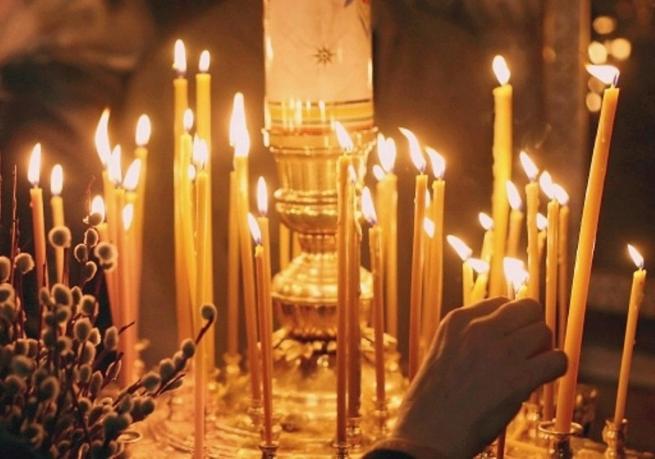 The liturgical activity of the home is the liturgy of the hours because it need not be done in a church and does not need a priest participating in order to be valid, the lay office is sufficient. The ideal therefore is that the father leads the family in the liturgy of the hours, visibly and audibly. If this were to common practice, I believe it would help to reestablish prayer as something that men do and will promote a genuine, masculine fatherhood as well as encouraging vocations to the priesthood amongst boys through this masculine example of liturgical piety.
The liturgical activity of the home is the liturgy of the hours because it need not be done in a church and does not need a priest participating in order to be valid, the lay office is sufficient. The ideal therefore is that the father leads the family in the liturgy of the hours, visibly and audibly. If this were to common practice, I believe it would help to reestablish prayer as something that men do and will promote a genuine, masculine fatherhood as well as encouraging vocations to the priesthood amongst boys through this masculine example of liturgical piety.
Something that would help to reinforce this is a domestic shrine. This is a visible focus in the home for prayer and the Eastern practice of creating and icon corner is particularly good for this. I will never forget seeing an Orthodox family doing their night prayers in front of the icons. The father led the prayers and all sang together or took their turn singing their prayers in the simple but robust Eastern tones. What impressed me was how all the children right down to the youngest who was four, wanted to take their turns and emulate their father. At one point two of the children argued about whose turn it was and Dad had to come in and arbitrate! They had a small incense burner burning and several long slender orange ochre beeswax candles burning in front of the icons. Each stood in reverence, facing the icon corner, occasionally crossing themselves. All the senses and faculties, it seems were directed for prayer as part of and on behalf of the family.
The families who have resolved to do this say to me that full family involvement is not always possible. It is inevitable that often family members will be too busy to join in and some will not want to. Nevertheless, the father resolved to make it clear that he was committing to regular prayer for the family and that all family members were invited at least to join in, so even if the prayer took place with only the father taking part, he was prepared to make that sacrifice on behalf of his family. And when the father is not with the family, for example if at work, he still strives to follow that liturgical rhythm of prayer and when does so, he does so on behalf of his family still.
I am only recently a father, but even when I was single and I prayed the liturgy of the hours I tried to remember to think of myself as participating in some way on behalf of my wider family and the various social groups that I am a member of, including work. Through my personal relationships, and this is still the case, those groups are present in the liturgy, to some degree, when I am. It is one way I can emulate Our Lord by participating in His sacrifice, and make a sacrifice for those with whom I relate. My hope is that will play a small part in bringing God's grace into these groups of people so that they might become communities supernaturally bound together in love. In my prayers, every morning, I consciously dedicate my liturgical activity to all those groups and with whom I am connected so I think of myself as representing my family, my friends, my work, the Church, social groups and so on, perhaps naming any individuals that are on my mind at that time. if, during the day I am not in a position to recite an hour, which can be often, I try mentally to mark the hour with a small prayer to maintain that sense of rhythm.
Images: top two are both paintings of the Holy Family by Giuseppe Crespi painting around the 1700; below: the Nativity with God the Father and the Holy Ghost by Giambattista Pittoni, Italian, 17th century
[1] Scott Hahn, Letter and Spirit, pub DLT, p28
A Beautiful Pattern of Prayer - the Path to Heaven is a Triple Helix…
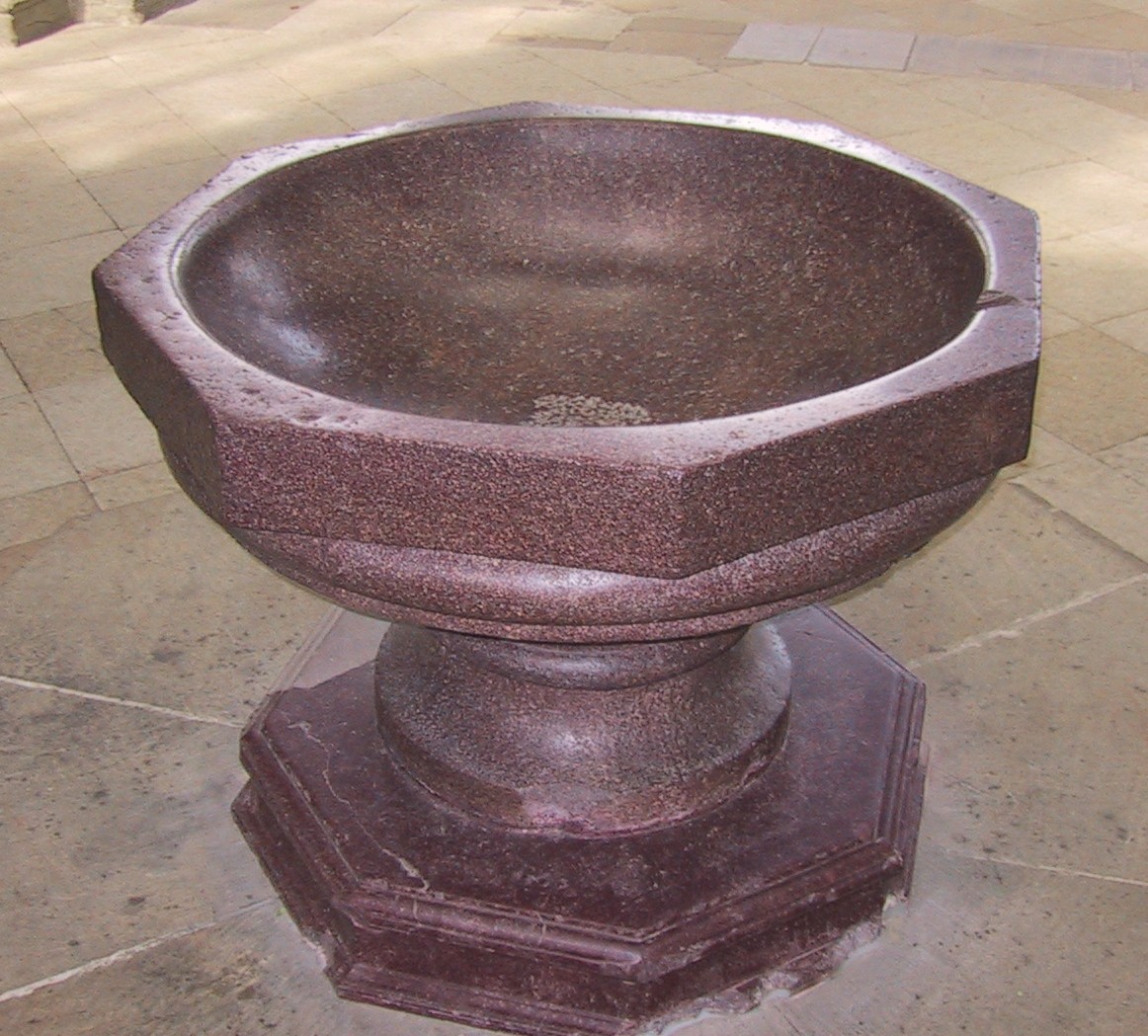 ...And it passes through an octagonal portal.
...And it passes through an octagonal portal.
Liturgy, the formal worship of the Church - the Mass and the Liturgy of the Hours, the Eucharist at its centre - is the ‘source and summit of Christian life’. We are made by God to be united with him in heaven in a state of perfect and perpetual bliss, a perfect exchange of love. All the saints in heaven are experiencing this and liturgy is what they do. It is what we all are made to do; this how it is the summit of human existence. Our earthly liturgy is a supernatural step into the heavenly liturgy, this unchanging yet dynamic heavenly drama of love between God and the saints; and the node, the point at which all of the cosmos is in contact with the supernatural is Christ, present in the Eucharist. It is more fantastic than anything ever imagined in a sci-fi drama. There is no need to watch Dr Who to see a space-time vortex, when I take communion at Mass (assuming I am in the proper state of grace) I pass through one. And there’s no worry about hostile aliens, that battle is fought and won.
Everything else that the Church offers and that we do is meant to deepen and intensify our participation in this mystery. Through the participation in the liturgy, we pass from the temporal into a domain that is outside time and space. Heaven is a mode of existence where all time, past and future is compressed into single present moment; and all places are present at a single point.
Our participation in this cannot be perfect in this life, bound as we are by the constraints of time and space. We must leave the church building to attend to the everyday needs of life. However, this does not, in principle, mean that we cannot pray continuously. The liturgy is not just the summit of human existence; it is the source of grace by which we reach that summit. In conforming to the patterns and rhythms of the earthly liturgy in our prayer, we receive grace sufficient to sanctify and order all that we do, so that we are led onto the heavenly path and we lead a happy and joyous life. This is also the greatest source of inspiration and creativity we have. We will get thoughts and ideas to help us in choices that we make at every level and which permeate every action we take. Then our mundane lives will be the most productive and fulfilling they can be.
How do we know what these liturgical patterns are? We take our cue from nature, or from scripture. Creation bears the thumbprint of the Creator and through its beauty it directs our praise to God and opens us to His grace. The patterns and symmetry, grasped when we recognize its beauty, are a manifestation of the divine order.
Traditional Christian cosmology is the study of the patterns and rhythms of the planets and the stars with the intention of ordering our work and praise to the work and praise of the saints in heaven. This heavenly praise is referred to as the heavenly liturgy. The liturgy that we participate, which is connected supernaturally to the heavenly liturgy is called the earthly liturgy. The liturgical year of the Church is based upon these natural cycles of the cosmos. By ordering our worship to the cosmos, we order it to heaven. The date of Easter, for example, is calculated according to the phases of the moon. The earthly liturgy, and for that matter all Christian prayer, cannot be understood without grasping its harmony with the heavenly dynamic and the cosmos. In order to help us grasp this idea that we are participating in something much bigger that what we see in the church when we go to Mass, the earthly liturgy should evoke a sense of the non-sensible aspect of the liturgy through its dignity and beauty and especially the beauty and solemnit of the art and music we use with it. All our activities within it: kneeling, praying, standing, should be in accordance with the heavenly standard; the architecture of the church building, and the art and music used should all point us to what lies beyond it and give us a real sense that we are praising God with all of his creation and with the saints and angels in heaven. When we pray in accordance with these patterns we are opening ourselves up to God’s helping hand at just the moment when it is offered. This is the prayer that places us in directly in beam of the heat lamp of God’s grace.
 The harmony and symmetry of the heavenly order can be expressed numerically. For example, because of the seven days of creation in Genesis there are seven days in the week (corresponding also to a half phase of the idealised lunar cycle). The Sunday mass is the summit of the weekly cycle. In the weekly cycle there is in addition day, the so-called eighth ‘day’ of creation, which symbolises the new order ushered in by the incarnation, passion, death and resurrection of Christ. Sunday the day of his resurrection, is simultaneously the eighth and first day of the week (source and summit). Eight, expressed as ‘7 + 1’ is a strong governing factor in the Church’s earthly liturgy. (It is why baptismal fonts and baptistries are constructed in an octagonal shape and why you might have octagonal patterns on a sanctuary floors.)
The harmony and symmetry of the heavenly order can be expressed numerically. For example, because of the seven days of creation in Genesis there are seven days in the week (corresponding also to a half phase of the idealised lunar cycle). The Sunday mass is the summit of the weekly cycle. In the weekly cycle there is in addition day, the so-called eighth ‘day’ of creation, which symbolises the new order ushered in by the incarnation, passion, death and resurrection of Christ. Sunday the day of his resurrection, is simultaneously the eighth and first day of the week (source and summit). Eight, expressed as ‘7 + 1’ is a strong governing factor in the Church’s earthly liturgy. (It is why baptismal fonts and baptistries are constructed in an octagonal shape and why you might have octagonal patterns on a sanctuary floors.)
Without Christ, the passage of time could be represented by a self enclosed weekly cycle sitting in a plane. The eighth day represents a vector shift at 90° to the plane of the circle that operates in combination with the first day of the new week. The result can be thought of as a helix. For every seven steps in the horizontal plane, there is one in the vertical. It demonstrates in earthly terms that a new dimension is accessed through each cycle of our participation temporal liturgical seven-day week.
 The 7+1 form operates in the daily cycle of prayer in the Divine Office too. Quoting Psalm 118, St Benedict incorporates into his monastic rule the seven daily Offices of Lauds, Prime, Tierce, Sext, None, Vespers, and Compline; plus an eighth, the night or early-morning Office, Matins.
The 7+1 form operates in the daily cycle of prayer in the Divine Office too. Quoting Psalm 118, St Benedict incorporates into his monastic rule the seven daily Offices of Lauds, Prime, Tierce, Sext, None, Vespers, and Compline; plus an eighth, the night or early-morning Office, Matins.
Prime has since been abolished in the Roman Rite, but usually the 7+1 repetition is maintained by having daily Mass (not common in St Benedict’s time). Eight appears in the liturgy also in the octaves, the eight-day observances, for example of Easter. Easter is the event that causes the equivalent vector shift, much magnified, in the annual cycle. The Easter Octave is eight solemnities – eight consecutive eighth days that starts with Easter Sunday and finishes the following Sunday.
These three helical paths run concurrently, the daily helix sitting on the broader weekly helix which sits on the yet broader annual helix. We are riding on a roller coaster triple corkscrewing its way to heaven. This, however, is a roller coaster that engenders peace.
For those who are not aware of this, more information on this topic and how to conform you're life to this pattern, read The Little Oratory; A Beginner's Guide to Prayer in the Home and especially the section, A Beautiful Pattern of Prayer.
Pictures: The baptismal font, top, is 11th century, from Magdeburg cathedral. The floor patterns are from the cathedral at Monreale, in Sicily and from the 12th century. The building is the 13th century octagonal baptistry in Cremona, Italy.
New book for prayer in the home that will 'transform the family and society'
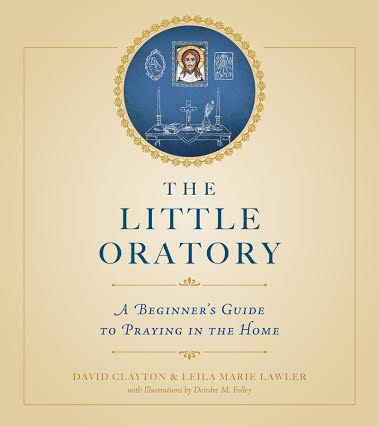 My book, co-authored with Leila Lawler, is now out and can be ordered from the publisher Sophia Institute Press. It is called The Little Oratory - A Beginner's Guide to Praying in the Home. The claim in the title about the impact it will have, incidentally, is not my own but is taken from a review by Scott Hahn, which I give in full below (although I do hope his assessment is correct!)
It is a practical program in mystagogy - the teaching of the mysteries of the Faith - that promotes a cultural renewal through a liturgical piety in the family and parish. It explains how to build a prayer corner - a 'little oratory' - as the centre of family prayer and has eight color detachable icons in standard sizes for framing, to get you started. The paintings you see in this article are from the book.
My book, co-authored with Leila Lawler, is now out and can be ordered from the publisher Sophia Institute Press. It is called The Little Oratory - A Beginner's Guide to Praying in the Home. The claim in the title about the impact it will have, incidentally, is not my own but is taken from a review by Scott Hahn, which I give in full below (although I do hope his assessment is correct!)
It is a practical program in mystagogy - the teaching of the mysteries of the Faith - that promotes a cultural renewal through a liturgical piety in the family and parish. It explains how to build a prayer corner - a 'little oratory' - as the centre of family prayer and has eight color detachable icons in standard sizes for framing, to get you started. The paintings you see in this article are from the book.
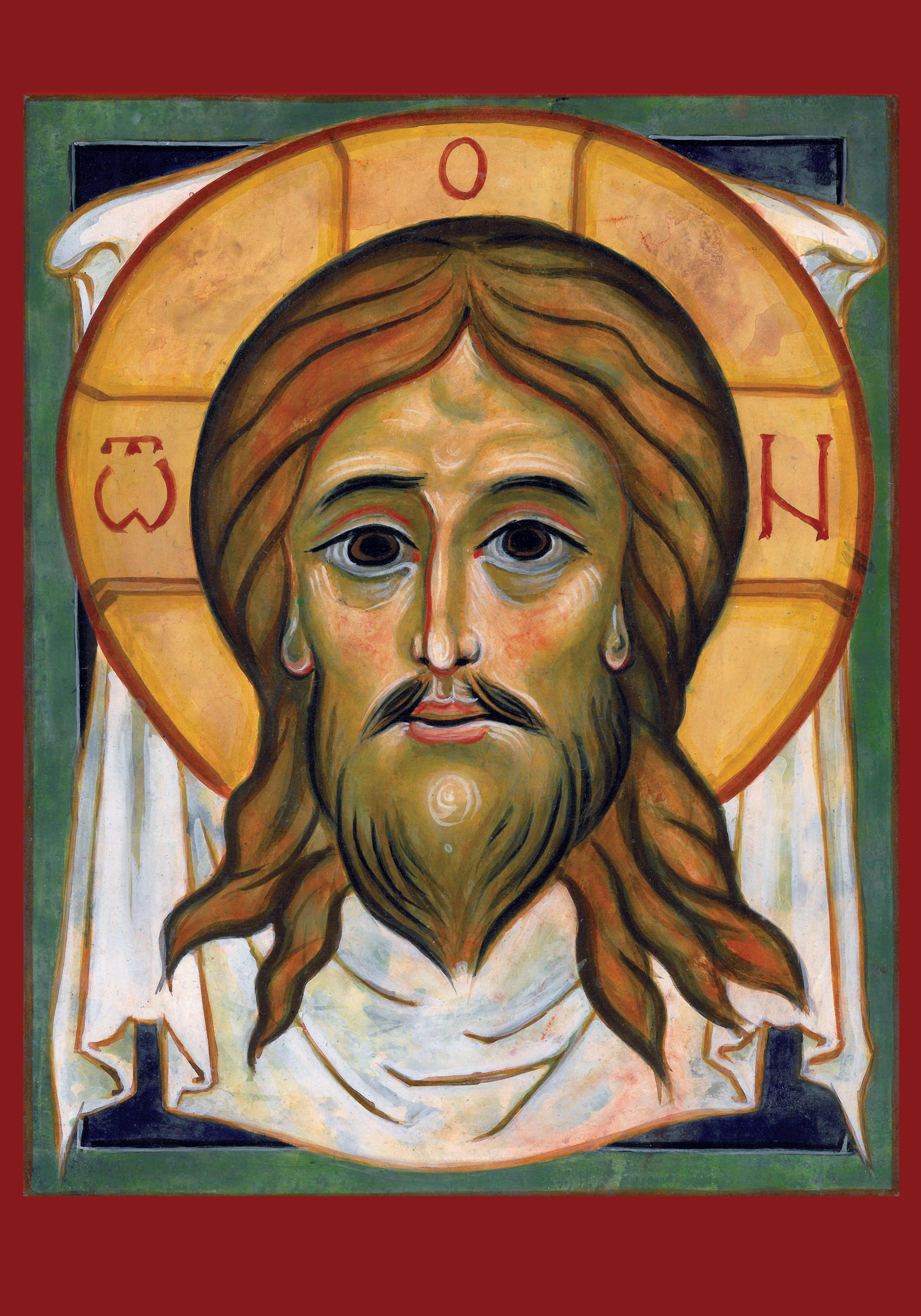 It addresses the crisis of fatherhood by explaining crucial role of fathers in family prayer. By encouraging fathers (as well as mothers!) to be an example in prayer it will help to encourage vocations for it will teach boys that prayer and worship are masculine activities as well as feminine.
It addresses the crisis of fatherhood by explaining crucial role of fathers in family prayer. By encouraging fathers (as well as mothers!) to be an example in prayer it will help to encourage vocations for it will teach boys that prayer and worship are masculine activities as well as feminine.
As such it is a family centered, practical manual for the New Evangelisation that could be promoted by parishes or cultural centres. It explains how family prayer can be the basis for building up communities beyond the family in parishes, for example, and even the workplace.
Here is what Scott Hahn wrote about it:
'This is one of the most beautiful books I've ever seen. How I wish I'd had it when I first became a Catholic, not just for myself, as a husband and father, but for my family, too. It's a commonplace of Christian tradition to call the home a sanctuary or "domestic church," but before a home can be a church, it must become an oratory -- a place of prayer. The authors of this book know that there are many obstacles, and they show us how to overcome them. This book is inspiring yet practical, realistic yet revolutionary. If one book has the potential to transform the Catholic family (and society), this is it.'
![]() It adapts for the family the traditional spirituality of artists that forms the person in humility so that they are open to inspiration and it engenders creativity. In addition it describes the practical aspects of an education in beauty based upon the traditional education of artists and how this can be applied at any level. It could be introduced, for example, into homeschooling groups, at a college level (I have been doing this in my Way of Beauty class) or even the basis of an MFA. The Sophia Institute Press site here [] includes downloadable high resolution prints of the icons in the book and numerous line drawings for coloring and for copying to help teach children how to draw (scroll down to the bottom of the page and you'll find the link). This really is useful at all levels - I teach adults in my classes using these same images.
It adapts for the family the traditional spirituality of artists that forms the person in humility so that they are open to inspiration and it engenders creativity. In addition it describes the practical aspects of an education in beauty based upon the traditional education of artists and how this can be applied at any level. It could be introduced, for example, into homeschooling groups, at a college level (I have been doing this in my Way of Beauty class) or even the basis of an MFA. The Sophia Institute Press site here [] includes downloadable high resolution prints of the icons in the book and numerous line drawings for coloring and for copying to help teach children how to draw (scroll down to the bottom of the page and you'll find the link). This really is useful at all levels - I teach adults in my classes using these same images.
 In addition it explains:
• Why the Liturgy of the Hours is important and how it can make your family holy
• How to sing your prayers even if you think you're tone deaf or timid
• How to pray the Rosary with children—and keep the rowdiest of them calm and reverent
• The active role children can play in the prayer life of the family and how to raise the cultural sensibilities of your children so they are more sensitive to divine beauty.
• What to do when only one parent takes the spiritual life seriously
• How to overcome the feeling that you’re too busy to pray
• Practical ways to extend the liturgical life into your workplace
In addition it explains:
• Why the Liturgy of the Hours is important and how it can make your family holy
• How to sing your prayers even if you think you're tone deaf or timid
• How to pray the Rosary with children—and keep the rowdiest of them calm and reverent
• The active role children can play in the prayer life of the family and how to raise the cultural sensibilities of your children so they are more sensitive to divine beauty.
• What to do when only one parent takes the spiritual life seriously
• How to overcome the feeling that you’re too busy to pray
• Practical ways to extend the liturgical life into your workplace
It has been well received so far and is endorsed also, by figures such as Joseph Pearce, Christopher West and Tom Howard. It is with the words of well-known Catholic writer Tom Howard that I finish: 'It is difficult indeed to refrain from superlatives when speaking of this book. It's all here. One would like to shout from the housetops, "Drop everything and start using this!" Here we find virtually all that could possibly be wanted for true Catholic household prayer. The liturgy, the Church year, the Hours, music, chant, icons, the Rosary, lots of "how to" helps, even tips on Catholic household décor. And the great thing is that it is all presented in clear, strong, sane, modest, unembellished prose. The helpful commentaries turn out to be luminous meditations actually. The book is a rare treasure.'
Buy the Little Oratory - A Beginner's Guide to Prayer in the Home from the Sophia Institute Press site, here.
How to Make an Icon Corner
 Beauty calls us to itself and then beyond, to the source of all beauty, God. God's creation is beautiful, and God made us to apprehend it so that we might see Him through it. The choice of images for our prayer, therefore, is important. Beautiful sacred imagery not only aids the process of prayer, but what we pray with influences profoundly our taste: praying with beautiful sacred art is the most powerful education in beauty that there is. In the end this is how we shape our culture, especially so when this is rooted in family prayer. The icon corner will help us to do that. I am using icon here in the broadest sense of the term, referring to a sacred image that depicts the likeness of the person portrayed. So one could as easily choose Byzantine, gothic or even baroque styles.
The contemplation of sacred imagery is rooted in man’s nature. This was made clear by the 7th Ecumenical Council, at Nicea. Through the veneration icons, our imagination takes us to the person depicted. The veneration of icons, therefore, is an aid to prayer first and it serves to stimulate and purify the imagination. This is discussed in the writings of Theodore the Studite (759-826AD), who was one of the main theologians who contributed to the resolution of the iconoclastic controversy.
Beauty calls us to itself and then beyond, to the source of all beauty, God. God's creation is beautiful, and God made us to apprehend it so that we might see Him through it. The choice of images for our prayer, therefore, is important. Beautiful sacred imagery not only aids the process of prayer, but what we pray with influences profoundly our taste: praying with beautiful sacred art is the most powerful education in beauty that there is. In the end this is how we shape our culture, especially so when this is rooted in family prayer. The icon corner will help us to do that. I am using icon here in the broadest sense of the term, referring to a sacred image that depicts the likeness of the person portrayed. So one could as easily choose Byzantine, gothic or even baroque styles.
The contemplation of sacred imagery is rooted in man’s nature. This was made clear by the 7th Ecumenical Council, at Nicea. Through the veneration icons, our imagination takes us to the person depicted. The veneration of icons, therefore, is an aid to prayer first and it serves to stimulate and purify the imagination. This is discussed in the writings of Theodore the Studite (759-826AD), who was one of the main theologians who contributed to the resolution of the iconoclastic controversy.
In emphasising the importance of praying with sacred images Theodore said: “Imprint Christ…onto your heart, where he [already] dwells; whether you read a book about him, or behold him in an image, may he inspire your thoughts, as you come to know him twofold through the twofold experience of your senses. Thus you will see with your eyes what you have learned through the words you have heard. He who in this way hears and sees will fill his entire being with the praise of God.” [quoted by Cardinal Schonborn, p232, God’s Human Face, pub. Ignatius.]
It is good, therefore for us to develop the habit of praying with visual imagery and this can start at home. The tradition is to have a corner in which images are placed. This image or icon corner is the place to which we turn, when we pray. When this is done at home it will help bind the family in common prayer.
![]() Accordingly, the Catechism of the Catholic Church recommends that we consider appropriate places for personal prayer: ‘For personal prayer this can be a prayer corner with the sacred scriptures and icons, in order to be there, in secret, before our Father. In a Christian family kind of little oratory fosters prayer in common.’(CCC, 2691)
Accordingly, the Catechism of the Catholic Church recommends that we consider appropriate places for personal prayer: ‘For personal prayer this can be a prayer corner with the sacred scriptures and icons, in order to be there, in secret, before our Father. In a Christian family kind of little oratory fosters prayer in common.’(CCC, 2691)
I would go further and suggest that if the father leads the prayer, acting as head of the domestic church, as Christ is head of the Church, which is His mystical body, it will help to re-establish a true sense of fatherhood and masculinity. It might also, I suggest, encourage also vocations to the priesthood.
The placement should be so that the person praying is facing east. The sun rises in the east. Our praying towards the east symbolizes our expectation of the coming of the Son, symbolized by the rising sun. This is why churches are traditionally ‘oriented’ towards the orient, the east. To reinforce this symbolism, it is appropriate to light candles at times of prayer. The tradition is to mark this direction with a cross. It is important that the cross is not empty, but that Christ is on it. in the corner there should be representation of both the suffering Christ and Christ in glory.
‘At the core of the icon corner are the images of the Christ suffering on the cross, Christ in glory and the Mother of God. An excellent example of an image of Christ in glory which is in the Western tradition and appropriate to the family is the Sacred Heart (the one from Thomas More College's chapel, in New Hampshire, is shown). From this core imagery, there can be additions that change to reflect the seasons and feast days. This way it becomes a timepiece that reflects the cycles of sacred time. The “instruments” of daily prayer should be available: the Sacred Scriptures, the Psalter, or other prayer books that one might need, a rosary for example.
This harmony of prayer, love and beauty is bound up in the family. And the link between family (the basic building block upon which our society is built) and the culture is similarly profound. Just as beautiful sacred art nourishes the prayer that binds families together in love, to each other and to God; so the families that pray well will naturally seek or even create art (and by extension all aspects of the culture) that is in accord with that prayer. The family is the basis of culture.
Confucius said: ‘If there is harmony in the heart, there will be harmony in the family. If there is harmony in the family, there will be harmony in the nation. If there is harmony in the nation, there will be harmony in the world.’ What Confucius did not know is that the basis of that harmony is prayer modelled on Christ, who is perfect beauty and perfect love. That prayer is the liturgical prayer of the Church.
A 19th century painting of a Russian icon corner
How to Pray With Visual Imagery
It is now more than three and a half years since I started this blog so first of all I would like to thank so many of you for your interest and your comments. I am currently involved in several book projects which will be published in the early part of next year - more information to come. In order to give myself time to write these, I thought I would reduce my postings to one fresh piece per week. However, it also occurred to me that many of you who read this, will not have seen much of what I posted in the first two years. In my mind, these are foundational to my thinking and shed light on much of what I write now, so I thought they would be worth repeating. So for these two reasons I thought I would replay some of these foundational posts. So for the next couple of months, I will alternate old and new. The first replay was first published in April, 2010:
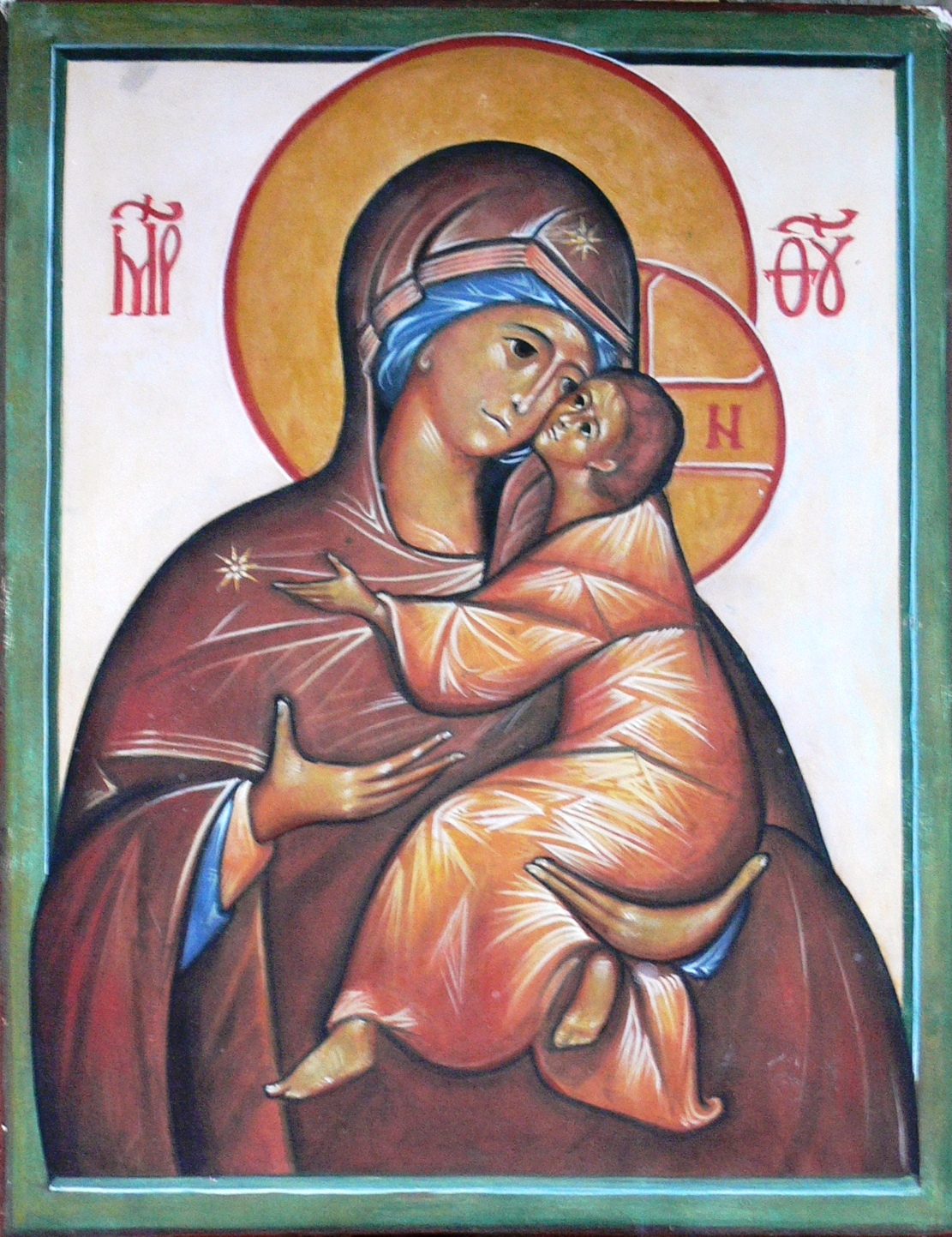 When I first started painting icons I was, of course, interested in knowing as well how they related to prayer. I was referred by others (though not my icon painting teacher) to books that were intended as instruction manuals in visual prayer. I read a couple and perhaps I chose badly, but I struggled with them. One the one hand, they seemed to be suggesting some sort of meditative process in which one spent long quiet periods staring at an icon and experiencing it, so to speak, allowing thoughts and feelings to occur to me. Being by nature an Englishman of the stiff-upper-lip temperament (and happy to be so) I was suspicious of this. I had finally found a traditional method of teaching art that didn’t rely on splashing my emotions on paper, and here I was being told that in the end, the art I was learning to produce was in fact intended to speak to us through a heightened language of emotion. Furthermore, the language used to articulate the methods always seemed to employ what struck me as pseudo-mystical expressions and which, I suspected, were being used to hide the fact that they weren’t really saying very much.
When I first started painting icons I was, of course, interested in knowing as well how they related to prayer. I was referred by others (though not my icon painting teacher) to books that were intended as instruction manuals in visual prayer. I read a couple and perhaps I chose badly, but I struggled with them. One the one hand, they seemed to be suggesting some sort of meditative process in which one spent long quiet periods staring at an icon and experiencing it, so to speak, allowing thoughts and feelings to occur to me. Being by nature an Englishman of the stiff-upper-lip temperament (and happy to be so) I was suspicious of this. I had finally found a traditional method of teaching art that didn’t rely on splashing my emotions on paper, and here I was being told that in the end, the art I was learning to produce was in fact intended to speak to us through a heightened language of emotion. Furthermore, the language used to articulate the methods always seemed to employ what struck me as pseudo-mystical expressions and which, I suspected, were being used to hide the fact that they weren’t really saying very much.
So I started to ask my teacher about this and to observe Eastern Christians praying with icons. What struck me was that prayer for them seemed to be pretty much what prayer was for me. They said prayers that contained the sentiments that they wished to express to God. The difference between what they did and what I did at that time was that they turned and looked at an icon as they prayed. Also, when at home, often happily and without embarrassment they sang their prayers using very simple, easily learnt chant. Before meals, for example, the family would stand up, face an icon of Christ on the wall and sing a prayer of gratitude or even just the Our Father.
As I learnt more about icons through learning to paint them, I realized that every aspect of the style of an icon is worked out to engage us in a dynamic that assists prayer – through its form and content the icon will do the work of directing our thoughts to heaven. In short I don’t need to ‘do’ anything. The icon does the work for me.
The iconographic form is not the only one to do this. The Western Catholic tradition is very rich and has also the Baroque and gothic art forms that are carefully worked out to engage the observer in a dynamic of prayer, although in different ways. If the icon draws our thoughts to heaven, the baroque form is designed in contrast to have an impact at a distance in order to make God present on earth. The gothic figurative art is the art of pilgrimage, or of transition from earth to heaven, and stylistically it sits between the iconographic and baroque. It is the ‘gradual psalm’ of artistic form. Just like the spires of its architecture, it spans the gap between heaven and earth so that we have a sense both of where we going to and where we are coming from. I will discuss how the form of each tradition achieves in the next articles I write.
So the advice I was given was to ditch the books about praying with icons, and learn first to pray. Then as I pray always aim to have visual imagery that I allow to engage my sight and which assists. St Augustine said that those who sing their prayers pray twice. I would add that those who look at visual imagery as well pray three times (and if we use incense four times, and consider posture five). This process of engaging different aspects of the person in addition to the intellect is a move towards the ideal of praying with the whole person. This is what praying from the heart means. The heart is the vector sum of our thoughts and actions. It is our human centre of gravity when both body and soul are considered. It is the single point that, when everything is taken into account, defines what I am doing. It is the heart of us, in the sense of representing the core. This is why it is a symbol of the person. It is a symbol of love also because each of us is made by God to love him and our fellow man. It symbolizes what we ought to be rather than, necessarily, what we are. The modern world has distorted the symbolism of the heart into one of desire and ‘heartfelt’ emotion, precisely because these are the qualities that so many today associate with the essence of humanity.
The liturgy is ultimate form of prayer. By praying with the Church, the mystical body of Christ, we are participating in ‘Christ's own prayer addressed to the Father in the Holy Spirit. In the liturgy, all Christian prayer finds its source and goal.’[1] Therefore, the most important practice of praying with visual imagery is in the context of the liturgy. For example, when we pray to the Father then we look at Christ, for those who have seen Him have seen the Father. The three Catholic figurative traditions in art already mentioned were developed specifically to assist this process.
Just as the liturgy is the ‘source and goal’ of prayer, so liturgical art is, I would argue, the source and goal of all Catholic art. The forms that are united to the liturgy are the basis of Catholic culture. All truly Catholic art will participate in these forms and so even if a landscape in the sitting room, will point us to the liturgical. We cannot become a culture of beauty until we habitually engage in the full human experience of the liturgy. In the context of visual art, this practice will be the source of grace from which artists will be able to produce art that will be the basis of the culture of beauty; the source of grace and from which patrons will know what art to commission; and in turn by which all of us will be able to fulfill our vocation, whatever it may be, by travelling on the via pulchritudinis, the Way of Beauty, recently described by Pope Benedict XVI.
Of course, each individual (depending upon his purse) usually has a limited influence on what art we see in our churches. However, as lay people, we can pray the Liturgy of the Hours and control imagery that we use. The tradition of the prayer corner, in which paintings are placed on a small table or shelf at home as a focus of prayer, is a good one to adopt. We ‘orientate’ our prayer towards this, letting the imagery engage our sight as we do so. We can also sing, use incense and stand, bow, sit or kneel as appropriate while praying. A book I found useful in this regard, which describes traditional practices is called Earthen Vessels (The Practice of Personal Prayer According to the Patristic Tradition) by Gabriel Bunge, OSB
Does this mean that meditation of visual imagery is not appropriate? No it does not. But as with all prayer that is not liturgical, it is should be understood by its relation to the liturgy. So just as lectio divina, for example, is good in that it is ordered to the liturgy because through it our participation in the liturgy is deepened and intensified. So, perhaps, should meditation upon visual imagery should be understood in relation to the use of imagery in the liturgical context. Also, I would say that it is useful, just as with lectio, to avoid the confusion between the Western and Eastern non-Christian ideas of meditation and contemplation are. I was recommended a book recently that helped me greatly in this regard. It is called Praying Scripture for a Change – An Introduction to Lectio Divina by Dr Tim Gray.
[1] CCC, 1073
Thomas Aquinas on the Psalms and the Liturgy as the Source of Wisdom
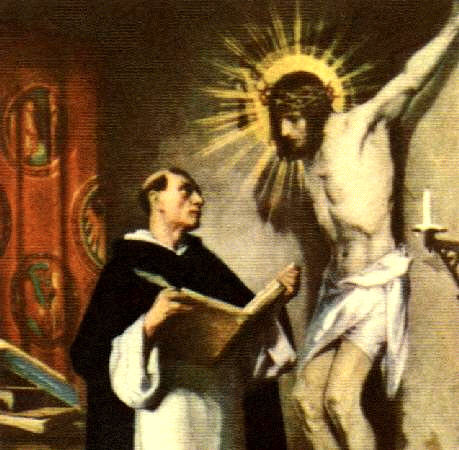 Educators take note! Here is the greatest source of wisdom. When writing about Jean Leclercq's Love of Learning and the Desire for God, I referred to his description of the tension that exists between the different educational approaches of the scholastic and the monastics schools . The former characterised (in part) by relying of very dry, technical language of logic; the latter relying on more accessible language that draws on sources such as scripture more directly, which while more poetic and beautiful might be criticised for lacking precision). As Leclercq points out, when the spiritual life of the person is centred on the liturgy, then either form of education can open the door to full knowledge, in love and through God's grace. The liturgy is the place where all of this can be synthesized and one is immersed in God’s wisdom and this, deep in the heart of the person, is where we form the culture.
St Thomas is the first name who comes to mind when one thinks of scholastics so his attitude to the liturgy would be of interest in this regard. In his little book Thomas Aquinas and the Liturgy, David Berger directs us to Thomas's special regard for the psalms and in the Divine Office as source of grace and wisdom, which reinforces the point that Leclerqc made. This regard for the psalms arises because Thomas considered that within the single book of the psalms they contain the entire content of theology. Berger refers us to his commentary on the psalms where Thomas says the following: 'The material is universal for while the particular books of the Canon of Scripture contain special materials, this book has the general material of Theology as a whole.' Then in referring to their special place in the liturgy where they are to be sung he says: 'This is what Dionysius [the Areopagite] says in Book 3 of the Celestial Hierarchy, the sacred scripture of the Divine Songs (Psalms) is intended to sing of all sacred and divine workings.' St Thomas goes on to tell us that these are presented in the most dignified form - liturgical praise, thanksgiving and prayer. And according to St Thomas, says Berger, 'wherever theology reverts to the psalms it shows it's character of wisdom in a special way'
Educators take note! Here is the greatest source of wisdom. When writing about Jean Leclercq's Love of Learning and the Desire for God, I referred to his description of the tension that exists between the different educational approaches of the scholastic and the monastics schools . The former characterised (in part) by relying of very dry, technical language of logic; the latter relying on more accessible language that draws on sources such as scripture more directly, which while more poetic and beautiful might be criticised for lacking precision). As Leclercq points out, when the spiritual life of the person is centred on the liturgy, then either form of education can open the door to full knowledge, in love and through God's grace. The liturgy is the place where all of this can be synthesized and one is immersed in God’s wisdom and this, deep in the heart of the person, is where we form the culture.
St Thomas is the first name who comes to mind when one thinks of scholastics so his attitude to the liturgy would be of interest in this regard. In his little book Thomas Aquinas and the Liturgy, David Berger directs us to Thomas's special regard for the psalms and in the Divine Office as source of grace and wisdom, which reinforces the point that Leclerqc made. This regard for the psalms arises because Thomas considered that within the single book of the psalms they contain the entire content of theology. Berger refers us to his commentary on the psalms where Thomas says the following: 'The material is universal for while the particular books of the Canon of Scripture contain special materials, this book has the general material of Theology as a whole.' Then in referring to their special place in the liturgy where they are to be sung he says: 'This is what Dionysius [the Areopagite] says in Book 3 of the Celestial Hierarchy, the sacred scripture of the Divine Songs (Psalms) is intended to sing of all sacred and divine workings.' St Thomas goes on to tell us that these are presented in the most dignified form - liturgical praise, thanksgiving and prayer. And according to St Thomas, says Berger, 'wherever theology reverts to the psalms it shows it's character of wisdom in a special way'
Then referring to Aquinas's early education as a Benedictine at Monte Cassino, Berger says: 'The love of singing the psalms in the context of the divine office, founded in Monte Cassino, seems to have stayed alive in Thomas all his life. The best known of Thomas's early biographers, William of Tocco, who had the privilege of knowing Thomas personally, reports that he would arise at night before the actual hour of Mattins.' (p14)
If wisdom is the goal of education, this reinforces the idea that the liturgy, including the liturgy of the hours, should be at the heart of the life of an educational institution, and that students should be encouraged to understand the value of this in helping them to achieve their goal. It is not simply that it is the whole psalter is sung in liturgy, but that the liturgy itself prepares us to receive and accept the wisdom contained within them in a special way.
One hopes that it is having the same effect on me as it has on St Thomas, even if only partially!
Plus don't forget to tell your friends about the course on art and beauty this summer.....
What Teaches Wisdom - Poetry, Clear Prose or Beautiful Art and Music?
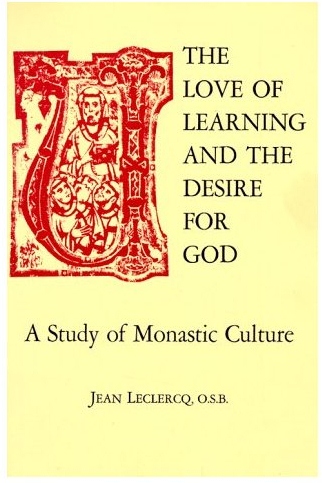 An education in truths that cannot be expressed in words
In his book, the Love of Learning and the Desire for God, Jean Leclerq describes various tensions playing out in education in the medieval period.
An education in truths that cannot be expressed in words
In his book, the Love of Learning and the Desire for God, Jean Leclerq describes various tensions playing out in education in the medieval period.
One arises from the love of beautiful literature, poetic or prosaic, that is not explicitly sacred. The danger is that at some point the beauty of these works is so compelling that it hampers the spiritual development of the individual, because ‘Virgil might outshine Holy Scripture in the monk’s esteem because of the perfection of his style’[1]. A properly ordered asceticism in this area consisted in a harmonization of sources and sometimes the more humbly written simple prose divinely inspired Scripture is necessary for us so that we focus on the beauty of what it directs us to, he says.
The second tension that Leclercq describes relates to the study of logic, or sometimes called dialectic, which is another of the first three liberal arts that together comprise the trivium. As such it requires an understanding the technical language of logic. It is necessary in order to study philosophy and theology. The difference arose between two different sorts of school, the monastic and the town scholastic schools. The word scholastic is derived from the Latin word meaning ‘school’ and is applied to distinguish it from the monastic setting.
One the one hand is the more traditional monastic school that is more literary, drawing on Biblical language and traditional literary forms.
The monastic schools of the medieval period recognized the value of dialectic, but were suspicious of scholastic Schools in which there was a tendency, they felt, for dialectics to dominated to the detriment of the other liberal arts, and especially those concerned with the beautiful expression of what is true and good. As Leclercq puts it: ‘ The Scholastics were concerned with achieving clarity. Consequently they readily make use of abstract terms, and never hesitate to forge new words which St Bernard [as an example of an authority from the monastic school] for his part avoids. Not that he refuses to use the philosophical terminology which through Boethius had come down from Aristotle…but for him this terminology is never more that a vocabulary for emergency use and does not supplant the bibilical vocabulary. The one he customarily uses remains, like the Bible’s, essentially poetic. His language is consistently more literary than that of the School.’
And in the use of this traditional technical vocabulary there also exists a certain diversity: each monastic author chooses from the Bible and the Fathers his favourite expressions and gives them the shade of meaning he prefers. Within the overall unity there remains a variety which is characteristic of a living culture.’[2]
The strength of this is great flexibility is a noble accessibility and beauty that opens the door and draws in the ordinary reader to receive the wonders they describe; the weakness is its technical imprecision so that it can be ambiguous and this leads to a greater possibility of misinterpretation.
Those seeking to offer a Catholic education today are likely to draw on both the monastic and scholastic influences. Even in the few Catholic ‘Great Books’ programmes that exist today we can see how a polarization might develop, some favouring either poetic knowledge on the one hand or of a formal Thomistic training on the other. This needn’t be so. As a general principle, I suggest, the way to avoid extremes of an over emphasis on the poetic form on one hand and an overemphasis on dialectic on the other is to make prayer and the liturgy the central, harmonizing principle of the life of the student and professor alike, whether monastic or scholastic. This is something more than encouraging participation in the liturgy. It is making the participation in the liturgy the guiding principle in what and how we learn and teach. The students should understand clearly how everything that they learn is done in order to deepen our participation in the liturgy. In this regard, the liturgy of the hours is a crucial presence, I suggest. Then the praying of the liturgy will in turn illuminate the lessons learnt in the classroom.
In light of this I suggest there are aspects of education that are neglected in Leclercq’s account. He focuses almost exclusively on communication by language. I wonder if this is too narrow a vision. The teaching of truth expressed linguistically is the most important part of study, but it should not be emphasized in a way that excludes the visual and musical. A formal study of perceptible beauty, especially visual and auditory aspects of harmony, proportion and order is in the traditional study of the quadrivium. St Augustine[3] spoke of how the beauty of the form says things that words cannot.
There are levels of understanding that cannot be said in words alone, even poetic words, that can only be communicated visually or through words when they are sung beautifully. Any lover of holy icons would say the same, I suggest, in regard to visual beauty. Giving ourselves a beautiful visual focus for our prayer, especially Out Lady, the suffering Christ and the face of Our Lord is important in this regard.
Liturgy is the place where all of this can be synthesized and one is immersed in God's wisdom and this, deep in the heart of the person, is where we form the culture.
[1] Ibid, p124
[2] Ibid, p201
[3] St Augustine, On Psalm 32, Sermon 1, 7-8; quoted in the Office of Readings for the Feast of St Cecilia, November 22nd
Psalm Tones for English - Learn to Sing Them in Half and Hour
Anyone can learn to sing the psalms Following a recent article about us singing Vespers at a local hospital, a number of people have been asking me about the music for the psalm tones that we use when we sing Vespers and Compline for the US Veterans at the VA hospital in Manchester, New Hampshire. In response to this I have put all the tones we have on a newly published page on this blog 'Psalm Tones' (see above). Before I describe what you will find there, I would just like to describe the last time we went to the veteran's hospitial in Manchester, NH. We arrived as usual and were greeted by Fr Boucher in the chapel. Nobody else was there. Fr Boucher thanked us warmly for coming and told us that several veterans had wanted to come but were too ill to go from ward to chapel, and two had died earlier that day. Fr Boucher wanted us to know how important therefore, our prayer was. So we sang Vespers and Compline just as intended and as beautifully as we could for those who could not hear us.
Coming back to the tones: these are so easy to pick up that even I can do it. Just to give you an idea, I am at the level of being able to pick out a tune on the piano with one finger reading notes from a treble clef (bass clef is beyond me).
There is an instructional video and sheet music for all the tones we have developed so far plus about a dozen examples of recorded psalms, most with scrolling score so you can see how the tone is applied to the text.
Because they are adaptable to any text, you don't need to buy any books or expensive CDs. You can apply them to your psalter - the video tells you how to mark the text so that you can do it. This means also that if you know even just one tone, then you could sing the whole psalter. As you learn more tones you can apply those too to the same text without any changes, you use exactly the same marks for each tone.
If you want sheet music for the harmonised psalm tones that you hear, then contact me direct. If we find that lots of people want them, then we'll put them up on the blog page too.
If you want further information, sheet music or instructional CDs for the music of Paul Jernberg, including his Mass of St Philip Neri, contact Paul at cathedralchoirschool@gmail.com
Just to give you a feel for one, here is the English version of the Nunc Dimittis.
http://youtu.be/m6tmDQPgRog
And here is a plane tone without harmonisation - Mode 5
http://youtu.be/enPlj4trQ50







